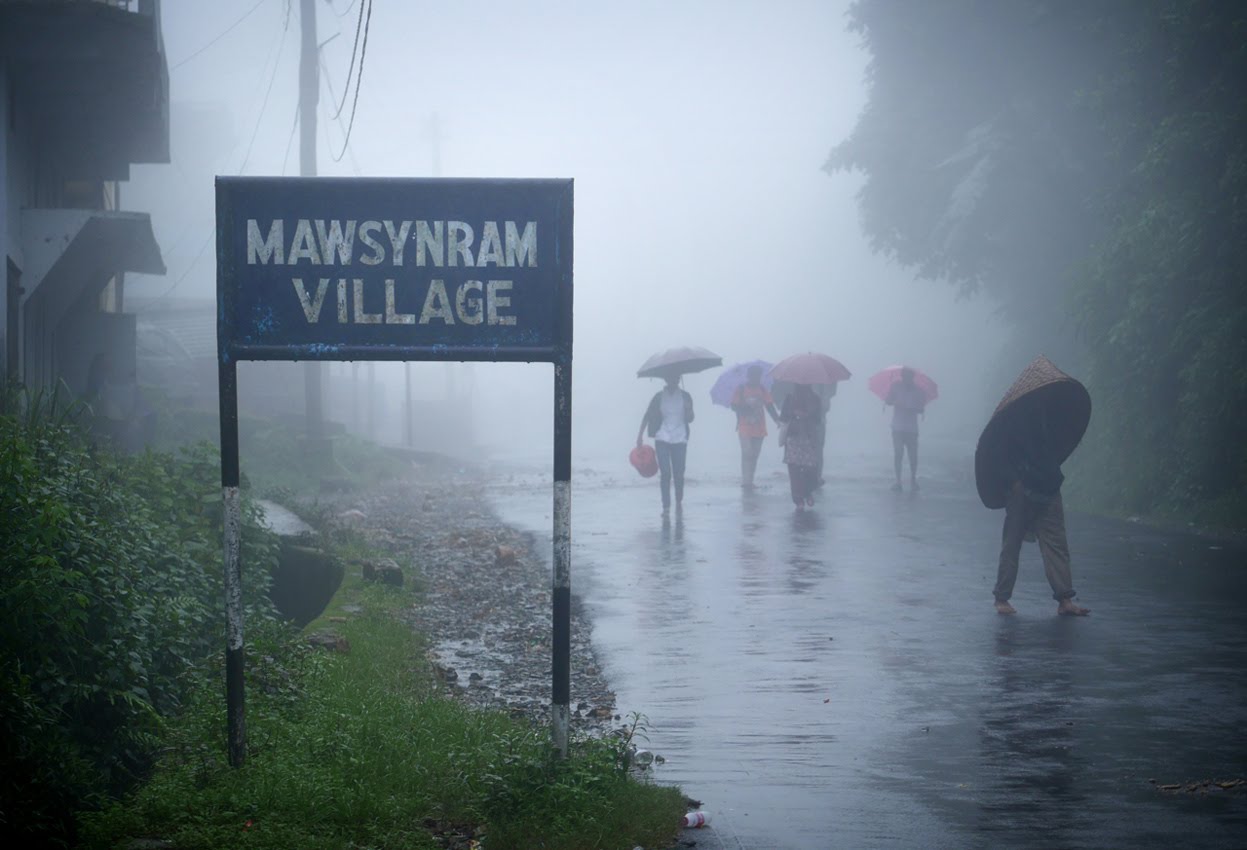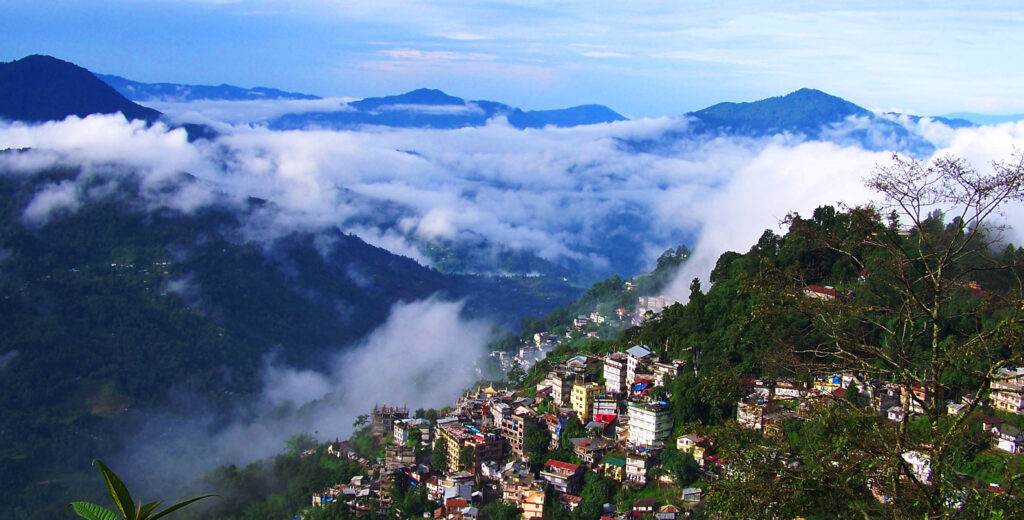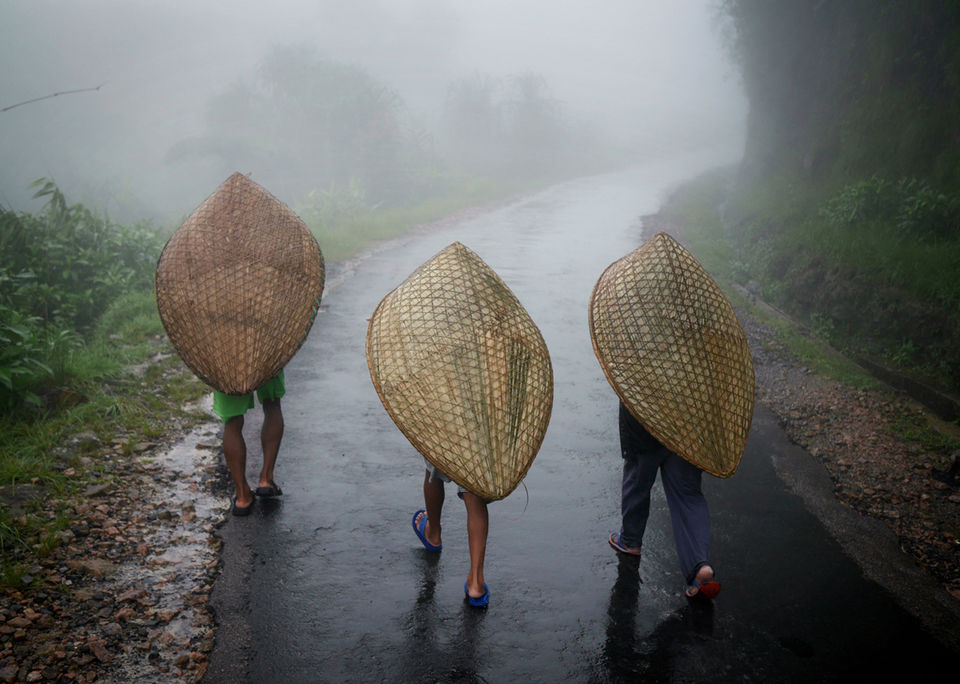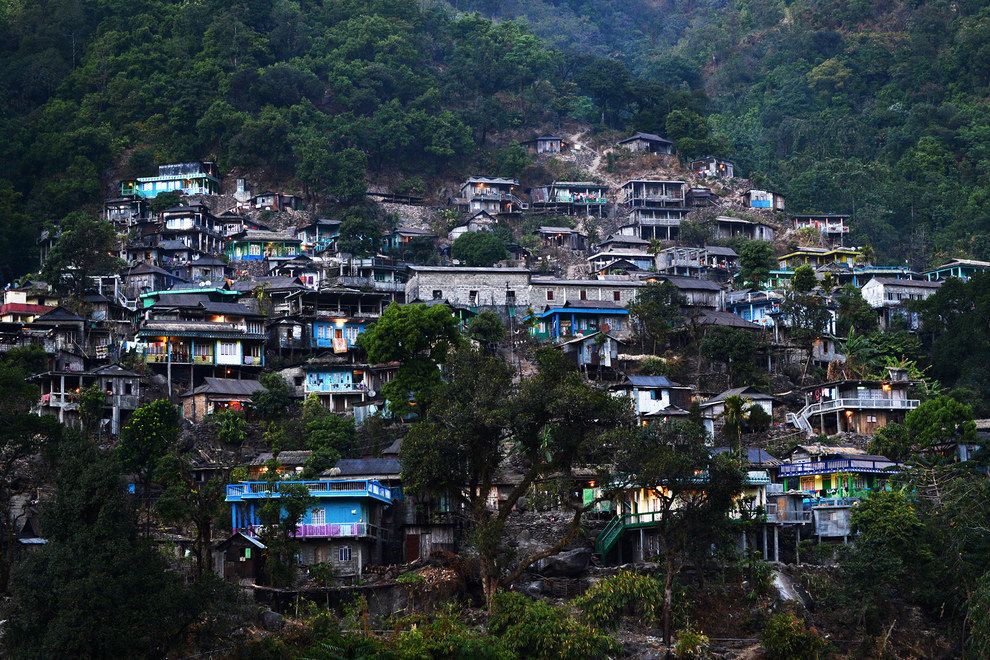
Wettest Place in India: An In-Depth Exploration of Mawsynram

Introduction
Wettest Place in India- Mawsynram, a small village in the northeastern state of Meghalaya, is famed as the “wettest place in India.” Situated in the East Khasi Hills district, Mawsynram records an exceptional average annual rainfall of around 11,871 millimeters. But what makes Mawsynram so unique in terms of its climate and natural beauty? In this comprehensive guide, we’ll unravel the secrets of this incredible village, delving deeper into why it receives such extraordinary rainfall, the best times to visit, and the myriad attractions in and around Mawsynram that make it a must-visit destination.
Table of Contents
- Geographical Overview
- Climatic Conditions
- Reasons for Heavy Rainfall
- Seasonal Variations
- Climate Change Impact
- Comparative Analysis with Other Wettest Places
- Best Time to Visit Mawsynram
- Tourism in Mawsynram
- Top Attractions in Mawsynram
- Mawsmai Cave
- Living Root Bridges
- Nohkalikai Falls
- Mawlyngbna
- Mawphlang Sacred Forest
- Eco-tourism and Sustainable Travel
- How to Reach Mawsynram
- By Air
- By Train
- By Road
- Accommodation Options
- Local Culture and Traditions
- Local Cuisine
- Festivals and Events
- Wildlife and Biodiversity
- Adventure Activities
- Planning Your Trip: Tips and Recommendations
- Frequently Asked Questions (FAQs)
- Conclusion

1. Geographical Overview
Located about 60 kilometers southwest of Shillong, the capital of Meghalaya, Mawsynram is situated at an elevation of 1,400 meters (4,600 feet) above sea level. This picturesque village is surrounded by dense forests, rolling hills, and deep valleys, all contributing to its stunning natural beauty. Mawsynram’s geographical coordinates are approximately 25.2986° N latitude and 91.5822° E longitude.
2. Climatic Conditions
Mawsynram experiences a subtropical highland climate characterized by heavy monsoon rains. The region’s climate is influenced by its elevation and its proximity to the Bay of Bengal. Mawsynram’s weather is usually cool with temperatures ranging between 5°C (41°F) in winter and 28°C (82°F) in summer. The village enjoys a moderate climate year-round, making it a pleasant destination despite its heavy rainfall.

3. Reasons for Heavy Rainfall
Orographic or Relief Rainfall
The primary cause of Mawsynram’s heavy rainfall is orographic or relief rainfall. As moist air from the Bay of Bengal travels towards the Khasi Hills, it is forced to ascend due to the hilly terrain. As the air ascends, it cools and condenses, forming clouds and eventually leading to heavy rainfall.
Monsoon Winds
The South-West monsoon winds play a crucial role in Mawsynram’s rainfall. These winds carry a significant amount of moisture from the Indian Ocean and Bay of Bengal, leading to prolonged heavy rains during the monsoon season.
4. Seasonal Variations
Monsoon Season (June to September)
During the monsoon season, Mawsynram receives the heaviest rainfall, often leading to temporary isolation due to landslides and flooding. The monsoon rains envelop the village in a lush, verdant green canopy.
Winter Season (October to February)
The winter season in Mawsynram is relatively dry with milder temperatures, offering a respite from the intense monsoon rains. This period presents an excellent opportunity for tourists to explore without the hindrances of heavy rain.
Pre-Monsoon and Post-Monsoon
The periods before and after the monsoon also see significant rainfall but are generally characterized by more stable weather patterns compared to the monsoon peak.
5. Climate Change Impact
Like many other regions across the globe, Mawsynram is not immune to the impacts of climate change. Researchers have observed variations in rainfall patterns, sometimes resulting in prolonged dry spells or intensified monsoon rains. This phenomenon poses a significant risk to the local agriculture and ecosystem, necessitating more robust climate action and sustainable practices.
6. Comparative Analysis with Other Wettest Places
While Mawsynram holds the title of the wettest place in India, it often competes with its close rival, Cherrapunji, for the global title of the wettest place on Earth. Cherrapunji, located nearby, also records impressive rainfall figures. However, Mawsynram receives slightly more annual rainfall, edging out Cherrapunji in the rankings.
Other notable mentions include Tutunendo in Colombia and Debundscha in Cameroon, both known for their significant annual rainfall.
Source: Guinness World Records
7. Best Time to Visit Mawsynram
While Mawsynram is a year-round destination due to its unique climate, the best time to visit varies based on personal preferences. For those looking to experience the peak of its meteorological wonder, visiting during the monsoon season from June to September is ideal. However, if you prefer milder weather and easier travel conditions, the post-monsoon season from October to February is advisable.
8. Tourism in Mawsynram
Tourism in Mawsynram is steadily growing as more travelers seek to experience its unique climate and natural beauty. Sustainable tourism practices are encouraged to preserve Mawsynram’s fragile ecosystem. Let’s explore the various attractions that draw visitors to this exceptional village.
9. Top Attractions in Mawsynram
Mawsmai Cave
One of the most popular attractions in the region, Mawsmai Cave, is a limestone cave that offers an incredible subterranean experience. The cave features impressive stalactites and stalagmites, creating an otherworldly atmosphere. Visitors are advised to carry torches and wear comfortable clothing while exploring the cave.
Living Root Bridges
The living root bridges are unique to Meghalaya and epitomize the perfect blend of nature and human ingenuity. These bridges are made from the roots of rubber trees (Ficus elastica) and can be found in several villages, including Riwai and Nongriat. They are resilient and can last for centuries, making them a remarkable example of sustainable architecture.
Nohkalikai Falls
Though technically located in Cherrapunji, Nohkalikai Falls is accessible from Mawsynram and is a sight you should not miss. Plunging from a height of 340 meters (1115 feet), it is the tallest plunge waterfall in India. The view is particularly breathtaking just after the monsoon season when the falls are in full flow.
Mawlyngbna
Mawlyngbna is a village near Mawsynram famous for its fossilized remains and beautiful rain pools. It offers eco-tourism activities such as hiking, kayaking, and angling, making it a favorite among adventure enthusiasts.
Mawphlang Sacred Forest
The Mawphlang Sacred Forest is another natural wonder near Mawsynram. This ancient forest is rich in biodiversity and is considered sacred by the local Khasi tribe. The forest is home to countless species of plants, orchids, and mushrooms, and it holds a deep cultural significance for the local communities.
10. Eco-tourism and Sustainable Travel
Sustainable tourism is vital to preserve the natural beauty and ecological integrity of Mawsynram. Tourists are encouraged to follow eco-friendly practices, such as minimizing waste, using biodegradable products, and respecting local traditions and customs. Various eco-lodges and community-based tourism initiatives are in place to promote responsible travel.
11. How to Reach Mawsynram
By Air
The nearest airport to Mawsynram is Shillong Airport (also known as Umroi Airport), located approximately 86 kilometers away. Alternatively, travelers can fly to Lokpriya Gopinath Bordoloi International Airport in Guwahati, Assam, and then take a road trip to Mawsynram.
Source: Airport Authority of India
By Train
The closest major railway station is Guwahati Railway Station, located about 151 kilometers from Mawsynram. From Guwahati, tourists can hire a taxi or take a bus to reach Mawsynram via Shillong.
By Road
Mawsynram is well-connected by road, and regular bus and taxi services operate from Shillong to Mawsynram. The drive from Shillong offers breathtaking views of the surrounding hills and forests, making it a journey to remember.
12. Accommodation Options
Mawsynram offers a range of accommodation options to suit various budgets. From guesthouses and homestays to eco-lodges and resorts, visitors can choose lodging that caters to their preferences while supporting local communities. Some popular options include:
- Mawsynram Guest House
- Nokrek Eco-lodge
- Rainforest Resort
Booking in advance is advisable, especially during the peak tourist seasons.
13. Local Culture and Traditions
The Khasi tribe predominantly inhabits Mawsynram, and their culture and traditions are deeply rooted in the region’s history. The Khasi people are known for their matrilineal system, where lineage and inheritance are traced through the mother’s side. Visitors can experience the rich cultural heritage through local festivals, traditional music, and dance performances.
14. Local Cuisine
Mawsynram offers an array of delectable local dishes that reflect the flavors of Meghalaya. Some must-try dishes include:
- Jadoh: A rice-based dish cooked with pork or chicken, often flavored with turmeric and fresh herbs.
- Dohneiiong: Pork cooked with black sesame seeds, giving it a rich and nutty flavor.
- Tungrymbai: Fermented soybean paste cooked with pork, ginger, garlic, and other spices.
- Pumaloi: A steamed rice dish, often served with curry or chutney.
Local markets and small eateries provide an authentic culinary experience.
15. Festivals and Events
Mawsynram’s cultural calendar is dotted with various festivals and events that showcase the region’s rich traditions and customs. Some of the notable festivals include:
- Nongkrem Dance Festival: A significant Khasi festival celebrated to appease the Goddess of crops, with traditional dance and music.
- Shad Suk Mynsiem: Also known as the ‘Dance of Peaceful Hearts,’ it is celebrated in April to mark the harvesting season.
These festivals offer a glimpse into the local way of life and are an excellent opportunity for cultural exchange.
16. Wildlife and Biodiversity
Mawsynram is home to a diverse range of flora and fauna, thanks to its unique climate and geographical location. The region’s forests are teeming with various species of birds, insects, and plants. Some notable wildlife species include:
- Hoolock Gibbon: The only ape species found in India, known for its distinctive calls.
- Clouded Leopard: A vulnerable species with striking cloud-like patterns on its fur.
- Red Panda: Though rare, sightings have been reported in the region.
- Orchids: Meghalaya is known for its rich variety of orchids, many of which can be found in and around Mawsynram.
17. Adventure Activities
Mawsynram offers numerous adventure activities that cater to thrill-seekers and nature enthusiasts alike. Some popular activities include:
- Trekking: The region offers several trekking routes that provide stunning views of the rolling hills, dense forests, and cascading waterfalls.
- Caving: Apart from Mawsmai Cave, Mawsynram is surrounded by other lesser-known caves that offer a thrilling caving experience.
- Waterfall Rappelling: This activity involves descending down waterfalls with the help of ropes and harnesses, providing an adrenaline rush.
- Bird Watching: The region’s rich biodiversity makes it a haven for bird watchers, with numerous species to spot and admire.
Source: Adventure Travel Trade Association
18. Planning Your Trip: Tips and Recommendations
Traveling to Mawsynram requires a bit of planning to ensure a smooth and enjoyable experience. Here are some tips and recommendations:
- Clothing: Pack light, waterproof clothing and sturdy footwear, especially if visiting during the monsoon season.
- Health Precautions: Carry essential medications, and consider taking anti-malarial tablets as a precaution.
- Local Etiquette: Respect local customs and traditions, and always ask for permission before taking photographs of people or sacred sites.
- Connectivity: Internet connectivity may be limited in some areas, so be prepared for a digital detox.
- Cash: Carry sufficient cash, as ATMs may be scarce in the region.
19. Frequently Asked Questions (FAQs)
Q: How much rainfall does Mawsynram receive annually? A: Mawsynram receives an average annual rainfall of around 11,871 millimeters, making it the wettest place in India and one of the wettest places on Earth.
Q: What is the best time to visit Mawsynram? A: The best time to visit Mawsynram depends on your preference. The monsoon season from June to September is ideal for experiencing the heavy rainfall, while the post-monsoon season from October to February offers milder weather.
Q: How do I reach Mawsynram? A: The nearest airport is Shillong Airport, approximately 86 kilometers away. The closest major railway station is Guwahati Railway Station, about 151 kilometers from Mawsynram. Regular bus and taxi services are available from Shillong to Mawsynram.
Q: What are the must-see attractions in Mawsynram? A: Some must-see attractions in and around Mawsynram include Mawsmai Cave, Living Root Bridges, Nohkalikai Falls, Mawlyngbna, and Mawphlang Sacred Forest.
Q: What should I pack for a trip to Mawsynram? A: Pack light, waterproof clothing, sturdy footwear, essential medications, and sufficient cash. Be prepared for limited internet connectivity in some areas.
20. Conclusion
Mawsynram, the wettest place in India, is a destination that offers a unique blend of natural beauty, cultural richness, and adventure opportunities. Whether you’re a nature enthusiast, a cultural explorer, or an adventure seeker, Mawsynram has something to offer everyone. Its extraordinary rainfall, lush landscapes, and vibrant traditions make it a must-visit destination. As we head further into the travel world, let’s aim to protect and preserve this unique haven through sustainable and responsible tourism practices.
Sources:
- Wikipedia
- Climate-Data.org
- National Geographic
- IPCC
- Guinness World Records
- Incredible India
- UNESCO
- WaterfallsofIndia
- EcoTourismIndia
- Forests of India
- UNEP
- Airport Authority of India
- Indian Railways
- Meghalaya Tourism
- TripAdvisor
- Cultural India
- NDTV Food
- WWF India
- Adventure Travel Trade Association
- Lonely Planet
I hope this extensive guide provides you with all the information you need about Mawsynram, the wettest place in India. Enjoy your journey!Regenerate Response







Hey people!!!!!
Good mood and good luck to everyone!!!!!